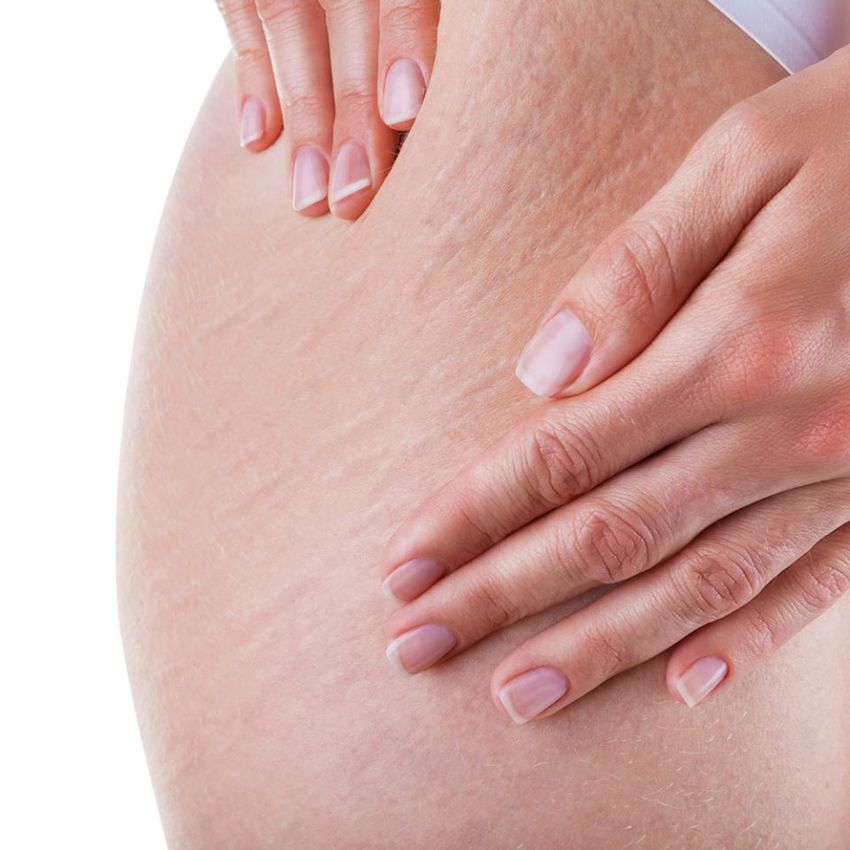What Causes Stretch Marks and How to Treat Them
Many of us will have experienced stretch marks at some point in our lives as they are a very common occurrence, but what exactly are they? Read on to find out all about what stretch marks are, what causes them, and how to treat them.

What Stretch Marks Are
Stretch marks occur when the skin is stretched to a point that is beyond its limit of flexibility. The skin is, by nature, very elastic in order to allow for the movement of joints and limbs – it owes its flexibility to a substance called collagen. The production of this protein fibre is disrupted when the skin is overstretched, which causes the scar-like appearance of stretch marks.
Like regular scars, stretch marks are either red or purple in colour when they first appear and have a different texture than the surrounding area of skin. Over time, this does fade, but the process can take years and stretch marks never fully disappear without some form of treatment. Unlike scars that form as a result of trauma to the dermis – such as an injury, surgery, or the side effect of another disease – there is no pain or discomfort associated with stretch marks.
What Causes Stretch Marks
Stretch marks can occur due to a number of different reasons in both men and women, the most common of which are puberty and rapid weight gain (and pregnancy in women).
Although stretch marks are more commonly viewed as a women’s issue, as we have mentioned, men are also susceptible to get them. Common causes of stretch marks in men include the overuse of anabolic steroids and rapid bulking, which is why stretch marks are a common occurrence among male athletes, weightlifters, and bodybuilders.
A less common cause of stretch marks in both men and women in the use of illegal lightening creams. Many of these banned products contain a corticosteroid which is known for causing the skin to become thinner when used over a long period of time and also inhibiting the proper production of collagen. The result of this is the appearance of stretch marks unless use of the product is discontinued – however, this only applies to low-quality bleaching products.
How to Treat Stretch Marks
Despite their scar-like appearance, stretch marks don’t have a physical impact on someone’s health as they aren’t painful and do not limit movement. However, this doesn’t mean that they don’t have a lasting effect on a person as they are often considered unattractive, which means that they can have a significant impact on a person’s confidence.
Treating stretch marks can be tricky and it is a process rather than a quick fix, but with the right combination of professional treatments supported by a regimen at home, you can significantly improve their appearance.
Despite what many over-the-counter products claim, once stretch marks have fully formed they require professional treatments to significantly improve their appearance. Treatments like advanced dermabrasion, collagen induction therapy, and peels all work on different layers of the skin to diminish the look of stretch marks by stimulating collagen and encouraging the skin to renew itself. By using a combination of all three, you can target the look of stretch marks on multiple levels, ensuring that you get the best results from all of the treatments.
Advanced Dermabrasion and Collagen Induction Therapy both work by creating micro-injuries in the skin that trigger the body’s wound-healing response, and also encourage the production of elastin and collagen. This production of elastin and collagen is what helps to diminish the look of stretch marks by improving the elasticity of the affected area and making it look plumper. Along with these, a peel such as the Marine Peel Treatment will also help to treat stretch marks while offering a gentler alternative to traditional glycolic and chemical peels.
Of course, for the best results, you should support any professional treatments with an at-home routine that will ensure that you get the best results, as well as prolonging the benefits of any treatments. This includes products to encourage skin healing as well as rejuvenation.
Written by David Milsont. David is an avid writer who loves to write on travel, lifestyle, health, fashion and more.
*****
You can find The Life of Stuff on Facebook, Twitter and Instagram but don’t forget ↓





